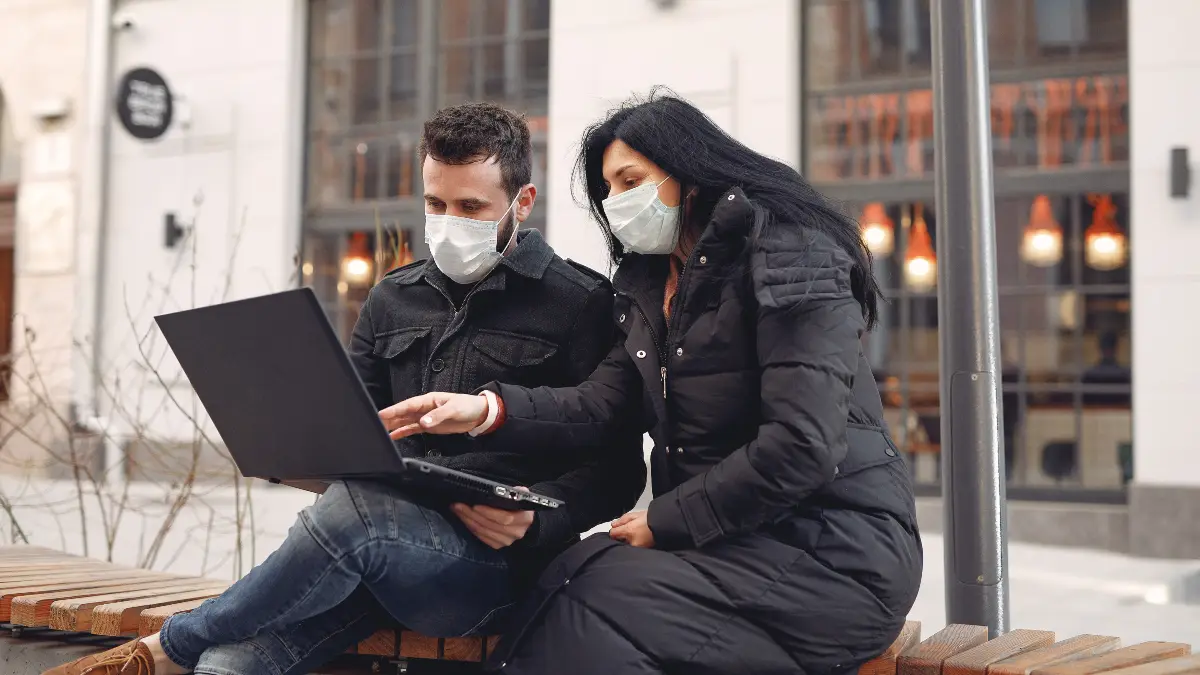You think you’re too smart to get scammed. So did travel writer Nomadic Matt, right before a tuk-tuk driver in Bangkok convinced him the Grand Palace was closed for lunch. It was a simple lie that turned into a long detour through shops where the driver earned a kickback. The palace was open the whole time, of course.
This is how the ‘helpful local’ scam works. It doesn’t target your wallet; it targets your good intentions. Your desire to be a polite, trusting traveler is the exact vulnerability scammers exploit, turning your kindness into their payday.
This guide goes beyond a simple list of tricks. We’ll break down the psychology behind the con, reveal its new digital forms, and give you a real plan to travel with confidence, not fear.
How to Spot the ‘Helpful Local’ Scam (Even Experts Fall for It)

The Smart Traveler’s Big Mistake
Travel writer Nomadic Matt was in Bangkok. He was trying to get to the Grand Palace. When he got to the entrance, no one was there. “Where is everyone?” he wondered. Right then, a tuk-tuk driver came up to him.
He had a simple answer: the palace was closed for lunch. That sounded possible. The driver said he could give Matt a tour of other temples that were open.
But after stopping at a few shops, the driver dropped Matt off at the palace. It was wide open. Matt was just on the wrong side of the building before.
This story shows a big problem for travelers. You want to be an open and friendly person. But scammers use that kindness against you. They target your good intentions. This is a blind spot that even the most experienced travelers have.
This 2025 guide is more than just a list of tricks. It breaks down how these scams work on your brain. It shows you the new digital versions of these scams.
And it gives you a three-step plan to stay safe. When you know the scammer’s playbook, you can learn to trust people in a smart way. This lets you have real connections without getting tricked.
Why Do These Scams Actually Work?

To beat a scammer, you need to know their tricks. These are not random acts. They are planned performances that use human psychology to work. The ‘Helpful Local’ scam is so good because it gets past your normal defenses. It targets how your brain is wired.
They Catch You When You’re Tired and Confused
When you get to a new country, your brain is busy. You’re finding your way around new streets, hearing a new language, and using different money. All the new sights and sounds can make you tired.
This mental fatigue makes it hard to think clearly and spot danger. Scammers love this. They target you when you are most confused—right after you land, when you’re struggling with a ticket machine, or looking at a map. They offer an easy fix to your problem. Your brain takes the easy path: trust.
They Use Your Politeness Against You
Scammers are experts at using normal human behavior to trick you. They use the politeness that we all learn.
The ‘Free Gift’ Trap:
If someone gives you something, you feel like you have to give something back. The “free” friendship bracelet is a perfect example. A person quickly ties a bracelet on your wrist. You didn’t ask for it, but now you feel like you owe them.
You’re more likely to pay just to avoid feeling awkward. This feeling is so strong it can happen before you even think. Special brain cells called ‘mirror neurons’ can make you return a friendly act without thinking about why the person is being nice.
Public Pressure:
Many scams happen in crowded places. When a scammer asks for money for a “gift” you didn’t want, they often get loud. They create a scene. You might pay just to avoid being embarrassed in front of everyone.
Wanting to Be Nice:
Travelers often don’t want to be rude. Scammers use this by being very persistent. A firm “no” can feel impolite. So, many people agree to a conversation they would normally avoid. This opens the door for the scam.
They Pretend to Be in Charge and Create Panic
People are taught to listen to authority figures. Scammers use this by pretending to be police or “tourist officials.”
They might show you a fake badge and ask to see your wallet for “fake money.” Or they might demand you pay a fine for a rule you didn’t break. The uniform and confident tone are often enough to make you obey.
Scammers also create a sense of panic. Lies like “your hotel is closed” or “this train is full” create a problem that needs a fast solution.
The scammer just happens to have that solution. This pressure stops you from taking a moment to think and check the information for yourself.
They Target Your “Good Traveler” Attitude
The ‘Helpful Local’ scam works so well because it targets how we try to travel today. We are told to meet locals and have real experiences. The scammer acts like the friendly guide who can give you that.
They take advantage of the fact that you lower your guard when you try to be a good guest in a new place. If you know about these tricks, you can build a mental wall. You can learn to tell the difference between real kindness and a trick.
5 Common Street Scams and How to Beat Them

The ‘Helpful Local’ scam has many different looks, but the trick is usually the same. These methods are old, but they still work. Here are the most common street scams you’ll face in 2025. You’ll find real examples, the psychology they use, and how to stop them.
1. The “It’s Closed” Lie
This is a very common scam. It often happens right after you arrive. A taxi driver or a “helpful” person near a station will tell you your hotel or a museum is closed for a holiday or for lunch.
Example:
In Costa Rica, people in official-looking clothes stand on the road to Manuel Antonio National Park. They stop cars and make drivers park in lots a mile away for a fee.
They have even thrown rocks at cars that try to pass. You park, but later find out there was plenty of official parking much closer.
Why it Works:
This scam uses your confusion. By creating a problem (a closed hotel), the scammer makes you depend on them for a solution.
How to Beat It:
Use your phone. Before you travel, download offline maps on an app like Google Maps. Your phone’s GPS works without data.
If someone says your hotel is closed, thank them and walk away. Then, call the hotel directly using the number on your booking confirmation.
2. The “Free” Gift That Costs You Money
In busy tourist spots, a smiling person will come up to you. They might offer you a “free gift” like a bracelet, a rose, or a sprig of rosemary for “good luck”. Before you can say no, they put it on you. The bracelet is tied to your wrist, or the flower is in your hand.
Example:
“Fake monks” will put a bracelet on your wrist. Then they show you a notebook with names of other tourists who “donated” money, pressuring you to do the same.
Why it Works:
This uses the feeling of reciprocity. Once you have the “gift,” you feel like you have to pay for it. The scammer then makes a scene, using your fear of public embarrassment to get you to pay.
How to Beat It:
Don’t let street vendors touch you. Keep your hands in your pockets. Say a clear, polite “No, thank you,” and keep walking. If someone puts something on you, take it off, hand it back, and walk away. They won’t follow you.
3. The Distraction Trick
These scams are meant to confuse you. This gives a second person a chance to steal from you. The situations feel like random accidents.
Example:
Someone “accidentally” spills something like mustard on you. They say sorry over and over and rush to help you clean it. While you’re distracted by the mess, their partner steals your wallet. Another version is the “found ring” scam.
A person finds a ring on the ground and asks if it’s yours. While you’re talking, their partner is targeting your bag.
Why it Works:
This trick overloads your brain. Your attention is on the small problem (the stain), so you don’t notice the second person.
How to Beat It:
If something strange and sudden happens in a crowd, see it as a warning. Your first move should be to protect your valuables. Hold your bag and put your hands in your pockets. Do this before you talk to anyone. Say, “I’m fine, thank you,” and move away to a safe spot.
4. The Sad Story
This scam plays on your kindness. The requests seem small and the stories are sad. It’s hard for a good person to say no.
Example:
A woman with a child asks you to buy baby formula, not for money. You want to help, so you buy the items from a specific store at a high price. The woman then returns the items to the store (which is part of the scam) and gets cash back.
Why it Works:
This trick gets around your doubt about giving cash. It feels like a “safe” way to help. It targets your instinct to help people in need, especially children.
How to Beat It:
Offer help, but not cash or goods. A kind but firm answer is best. Instead of buying things, tell the person about a local charity or church. If someone asks for directions, help them without getting too close or taking your eyes off your bags.
These classic scams are still around. But the most dangerous new scams are now on your phone.
| The ‘Helpful Local’ Scam Matrix |
| Scam Name |
| The Reroute |
| The “Free Gift” |
| The Distraction |
| The Sob Story |
Watch Out: Scams Are Moving Online

The friendly stranger offering help is now online. In 2025, the most dangerous ‘helpful locals’ are fake QR codes, bad Wi-Fi networks, and tricky emails.
These scams use the same psychology as street scams. They use trust, panic, and the desire for things to be easy. But they can do much more damage.
A street scammer might get $20. A digital scammer can get into your bank account and take thousands, all without being seen. That’s why in 2025, being safe online is the most important part of travel safety.
Fake QR Codes and Bad Wi-Fi
Easy-to-use tech has created new ways for scammers to work. They now target you through the tools that are supposed to make travel easier.
The Scam:
Scammers put fake QR code stickers over real ones in airports and restaurants. You scan the code to see a menu or pay for a ticket. But it takes you to a fake site that steals your credit card info or puts bad software on your phone.
Criminals also set up fake “Free Airport Wi-Fi” networks. The names look almost the same as the real ones. When you connect, they can steal your data, like your bank logins.
How It’s “Helpful”:
This is the online version of a local handing you a menu. It plays on your trust and your desire for things to be easy. The offer of “free Wi-Fi” seems helpful but hides a bad intention.
How to Beat It:
Always use a Virtual Private Network (VPN) on public Wi-Fi. A VPN scrambles your connection so no one can read your data. Before you scan a QR code, check if it looks like a sticker placed over another one.
Ask an employee to make sure it’s real. For anything important, use your phone’s data instead of public Wi-Fi.
Fake Websites and Phone Numbers
The stress of travel planning is something scammers use. They pretend to be trusted companies to trick you when you’re not paying close attention.
The Scam:
Scammers make fake booking websites that look just like the real ones. They also use ads to show fake airline customer service numbers. If your flight is canceled, you might search for the airline’s number. You click the top ad and call a scammer.
They ask for your credit card to pay a “rebooking fee”. Fake websites went up by 284% in late 2024, according to Visa.
How It’s “Helpful”:
This scam pretends to be an official helper during a stressful time. The fake agent offers a quick fix, just like the tuk-tuk driver with a “better” hotel.
How to Beat It:
Never trust a phone number from a search engine. Only use the official app or website for the airline or hotel. Before your trip, save their real numbers in your phone. Be careful of deals that seem too good to be true on sites you don’t know.
New AI Voice Scams
The scariest new scams use Artificial Intelligence (AI) to create very personal and emotional attacks.
The Scam:
A new threat is the AI fake emergency call. A scammer can use a short clip of someone’s voice from social media to copy it. You might get a panicked call from someone who sounds just like your child or partner.
They say they’ve been in an accident or arrested and need you to wire money right away. This is made worse by a 244% yearly increase in fake digital documents, which can be used to make fake booking confirmations.
How It’s “Helpful”:
This is the ultimate scam. It creates a very personal and powerful cry for help that is hard to ignore. It creates extreme panic and uses your deepest connections: your family.
How to Beat It:
The best defense is to be ready. Make a secret “safe word” or a strange question that only your family knows the answer to.
If you get a panicked call, stay calm. Hang up and call the person back on their real phone number. Be very suspicious of any request for an urgent wire transfer.
Your 3-Step Plan to Avoid Scams

Staying safe is not just about what not to do. It’s a plan you start before you leave home and follow until you get back. This plan combines preparation, awareness, and good digital habits. It will make you a tough target for scammers.
Step 1: Before You Go
The best defense starts before you get on the plane. This step is about getting your money, tech, and knowledge ready.
- Research Local Scams: Every place has its own version of common scams. Before you go, search for terms like ” tourist scams” or “[City] taxi scams” to learn about local tricks.
- Get Your Money Ready: Tell your bank you are traveling. This stops them from thinking your real purchases are fraud. Use a credit card for big purchases. Credit cards have better protection if something goes wrong.
- Set Up Your Tech: Put these apps on your phone.
- A VPN: This is a must-have for 2025. A VPN like NordVPN or ExpressVPN protects your data on public Wi-Fi.
- Offline Maps: Download maps for your destination on Google Maps. This way, you always know where you are. It helps you see if a taxi driver is taking a long route on purpose.
- Safety Apps: Think about an app like GeoSure. It gives safety scores for neighborhoods, which is great for women and LGBTQ+ travelers. Sitata gives you real-time alerts about local problems, like protests.
Step 2: When You’re There
Once you arrive, how you act is your main defense. Scammers look for easy targets.
- Look Confident: Your body language can stop scammers. Walk like you know where you’re going. Stand tall. Don’t look lost, even if you are. Scammers are less likely to bother someone who looks confident. If you need to check a map, go inside a shop instead of standing on a corner.
- Learn to Say No: Practice a polite but firm “No, thank you” and keep walking. Don’t stop or make eye contact with a pushy street seller. In some places, learning a local phrase helps. In Paris, saying “J’habite ici” (“I live here”) can stop scammers who target tourists.
- Use the “Pause and Check” Rule: Scammers want you to make fast decisions. If you feel pressured, take a two-minute pause. Step away from the person. Use your phone to check their story (like calling your hotel). Or just take a deep breath. This short break is often all you need to spot the trick.
Step 3: Protect Your Tech
Today, being safe in person and online are connected. Good digital habits are very important.
- Charge Your Phone Safely: Don’t use public USB charging stations. They can be changed to install bad software on your phone and steal your data. This is called “juice jacking.” Always use your own power bank or plug your charger into a wall outlet.
- Pay Safely: Use contactless payment like tap-to-pay whenever you can. This keeps your card in your hand. It lowers the risk of someone copying or taking a picture of it.
- Connect to Wi-Fi Carefully: Never do important things like banking on public Wi-Fi without a VPN. If you’re not sure, it’s safer to use your phone’s data, even if it costs more.
| The 2025 Traveler’s Digital Safety Checklist |
| ☐ Installed a good VPN on my phone and laptop. |
| ☐ Downloaded offline maps for the cities I’m visiting. |
| ☐ Saved real airline and hotel numbers in my phone’s contacts. |
| ☐ Turned on alerts for my credit and debit cards. |
| ☐ Packed a power bank to avoid public USB ports. |
| ☐ Made my passwords for email and banking stronger. |
| ☐ Saved copies of my passport and visa to a secure cloud drive. |
What to Do If You Get Scammed

Even the most careful traveler can get tricked. If it happens, what you do next is very important. Acting fast can limit the damage. The goal is to stop the threat, report it, and then move on.
First Steps to Take
The moment you know you’ve been scammed, go to a safe place. A hotel lobby, a bank, or a police station is a good choice. Then, do these things:
- Call Your Bank: If your cards were stolen or used, call your bank’s 24/7 fraud line right away. Tell them what happened and cancel the cards. Most bank apps let you “lock” your cards instantly. This stops anyone from using them.
- Change Your Passwords: If your phone was stolen or your login info was taken, change your passwords for important accounts. Start with your email, bank, and social media. If your phone was stolen, use a “find my device” tool to lock it or erase its data.
- Save Proof: If you can, take a screenshot of the fake website or save the bad email. Write down everything you remember about what happened. This info will be important for your reports.
How to Report the Scam
Reporting a scam helps you get your money back from insurance or your credit card company.
- File a Police Report: Go to the nearest police station. Even if they don’t seem to help much, getting a police report number is often needed for insurance claims.
- Report it to Websites: If the scam happened on a site like Airbnb, report the fake listing to them. This helps protect other people.
- Report it Back Home: When you get home, report the scam to national agencies. In the U.S., you can report to the Federal Trade Commission (FTC) at ReportFraud.ftc.gov. For online scams, report to the FBI’s Internet Crime Complaint Center (IC3).
Don’t Blame Yourself
Getting scammed feels bad. It’s not just about the money. It can make you feel foolish, angry, and unsafe. It’s important to deal with these feelings.
- Be Kind to Yourself: Remember, these scams are made by pros to trick everyone. Falling for one doesn’t mean you’re not smart. It just means the scammer was good at their job. In 2024, U.S. consumers lost $12.5 billion to fraud. This was a 25% jump from the year before. It shows how common and good these scams are.
- See It as a Lesson: Don’t think of it as a failure. Think of it as a tough but useful lesson. The experience has taught you a lot about being aware and setting boundaries. It will make you a smarter traveler in the future.


